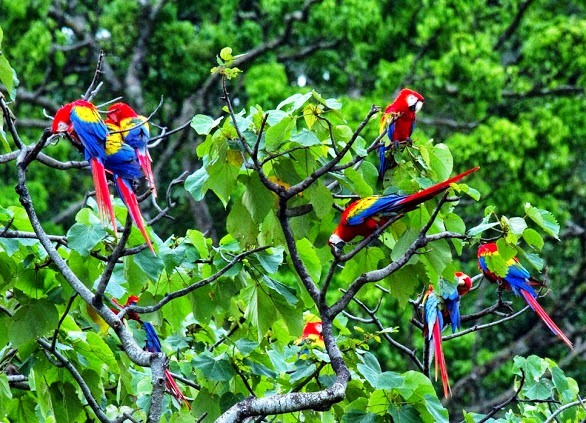Celebrate sloths in the rainforest on October 20, International Sloth Day! See sloths in Costa Rica at Playa Nicuesa Rainforest Lodge on the gulf of Golfo Dulce.
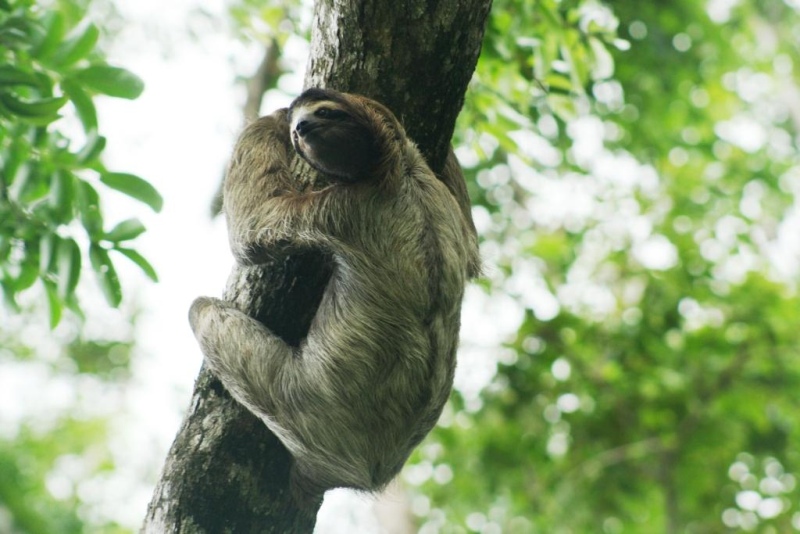
Article by Shannon Farley
Tropical rainforest sloths in Costa Rica have become famous, thanks to publicity by Animal Planet and the Costa Rica Tourism Board. They are one of the most sought-after animals to see by travelers visiting the Central American country.
You can celebrate International Sloth Day on October 20! The day to honor the adorable, slow-moving, tree-dwelling mammals was created in 2010 by the AIUNAU Foundation, a non-profit conservation and wildlife organization based in Colombia. The unofficial holiday raises awareness about the lives and natural habitat of tropical sloths, which are native to Central and South America.
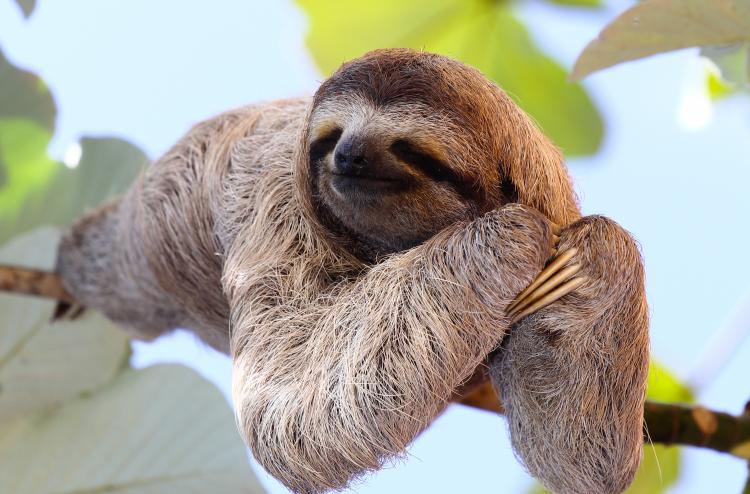
15 Fun Facts about Sloths in the Rainforest
- Sloths are arboreal animals native to Central and South America, so they spend most of their time living high in the jungle tree canopy.
- Sloths hang from the trees effortlessly, using their up to four-inch-long claws to hold onto tree branches. Their claws function like hooks, and they don’t require any muscle power to stay suspended from the branches.
- There are two types of sloths in Costa Rica (there are six species alive on the planet). The Three-fingered Brown-throated sloth (Bradypus variegatus) is the most well-known with its dark gray-brown face, white forehead, dark raccoon-like bands on its eyes, and seemingly blissful expression. The Hoffmann’s Two-fingered sloth (Choloepus hoffmanni) is larger and is champagne to dark brown in color with a light brown or blond face and brown eye rings. Its hairless, muzzle-like snout is longer and wider than the Three-fingered sloth, and it doesn’t have a visible small tail like its cousin.

The Hoffmann’s Two-fingered sloth (Choloepus hoffmanni) is larger than its cousin and just as adorable. - Sloths are known for moving slowly. They move through the tree canopy at a rate of about 40 yards (36.6 m) per day.
- They also sleep about 15 hours a day due to their exceptionally low metabolic rate.
- Sloths are so sedentary that green algae grow on their shaggy fur, which helps camouflage them in the trees. Their two layers of fur also host a variety of symbiotic fungi, beetles and other insects.
- Although slow in the trees and moving on the ground, sloths are actually excellent swimmers. They use their long arms to “doggie paddle” in the water at a rate three times faster than on land.
- Sloths are vegetarians. They eat mostly buds, tender shoots and leaves, flowers and fruit. Sloths keep their stomach full because their diet is not very nutritious, and it takes them almost a month to digest one meal.
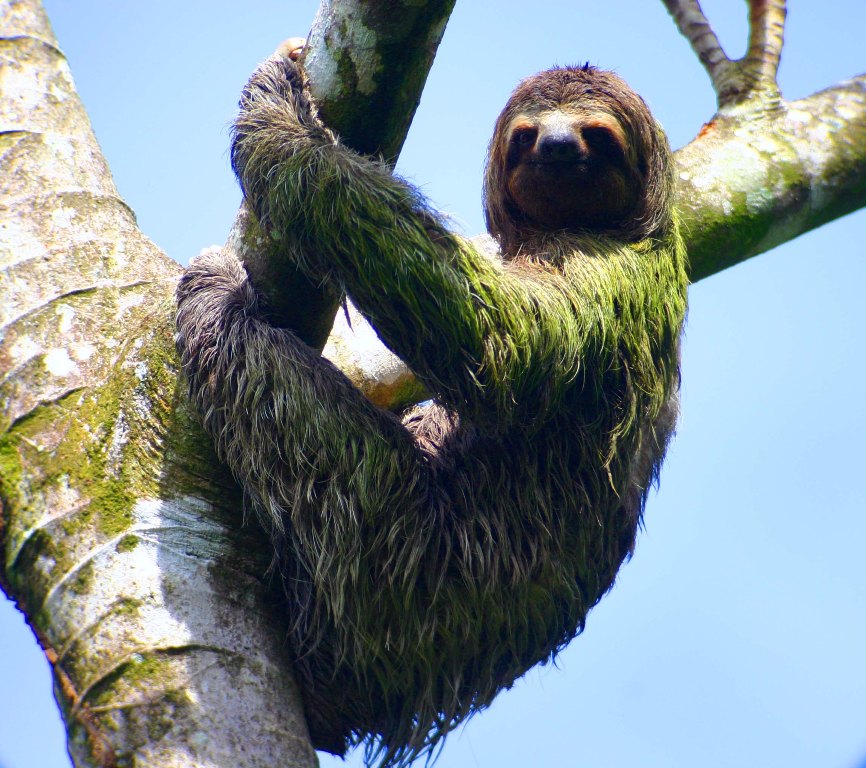
Sloths are so slow-moving that algae grow on their shaggy fur, which helps them to blend in with tree foliage. - Thanks to their slow metabolism, they only urinate/defecate about once a week. To do so, they descend from the trees to the ground, where they are vulnerable to predators. It is one of the only times they come to the ground.
- Two-fingered sloths have five cervical vertebrae and a special adaption on their skull that lets them tilt back their heads at a 45-degree angle. This allows them to better see predators approaching and to look for food more easily.
- Sloths live a solitary life, connecting with another adult sloth only for mating and for the first year of their lives with their mothers. Sloths can live 30 years or more.
- A baby sloth stays close to its mother for up to a year. For its six months of infancy, a baby clings to its mother’s belly.

Sloth mothers care for their babies for about a year after birth. - When female sloths are in heat, they shriek and scream. This helps them locate a suitable mate in the dense, leafy, jungle treetops.
- Sloths’ primary predators include eagles, snakes and jaguars, along with habitat loss – the biggest danger of all.
- Ancient ground sloths were some of the largest land mammals ever to walk the planet. They could weigh up to four metric tons and grow as big as modern day elephants. They used to inhabit all of the Americas and went extinct around 11,000 years ago.
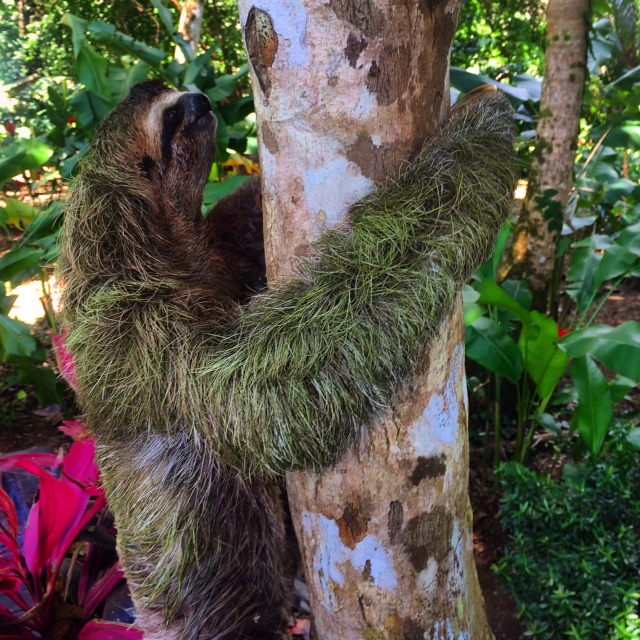
WHERE TO SEE A SLOTH IN COSTA RICA?
Playa Nicuesa Rainforest Lodge in the southern coastal rainforest is a perfect spot with plenty of wild spaces around to see sloths. The sustainable ecolodge has a 165-acre protected private rainforest reserve, and is located next to the large Piedras Blancas National Park and close to the Corcovado National Park and Golfito Wildlife Refuge.
Sloths in the rainforest are sometimes easy to see since they don’t move very fast; but at other times very difficult to spot thanks to their excellent camouflage in the trees where they live. At Nicuesa Lodge, you can see both species of tropical rainforest sloths in Costa Rica – the Three-fingered sloth (Bradypus variegatus) and the Two-fingered sloth (Choloepus hoffmanni). Staff naturalist guides lead walks on the lodge’s rainforest trails and in the Piedras Blancas National Park to see wildlife and rainforest plants and trees.





